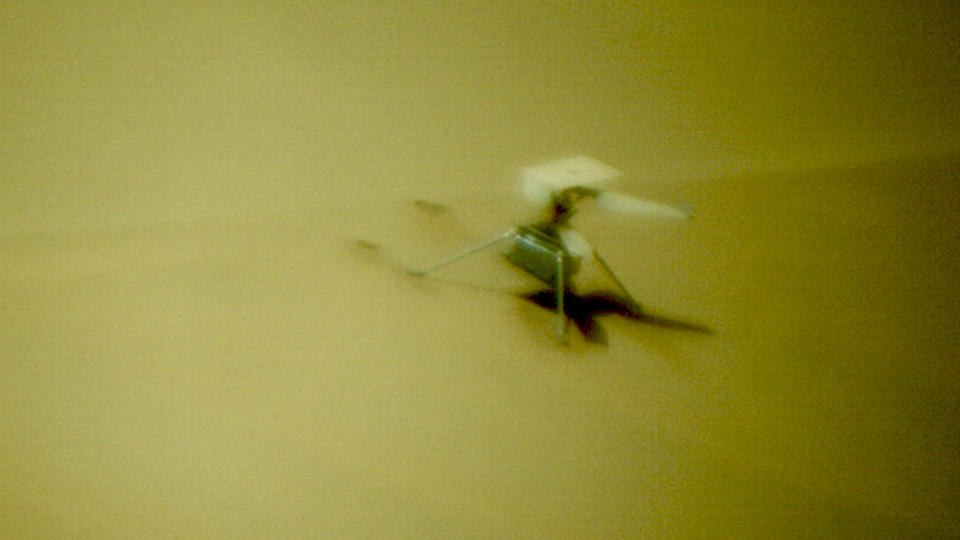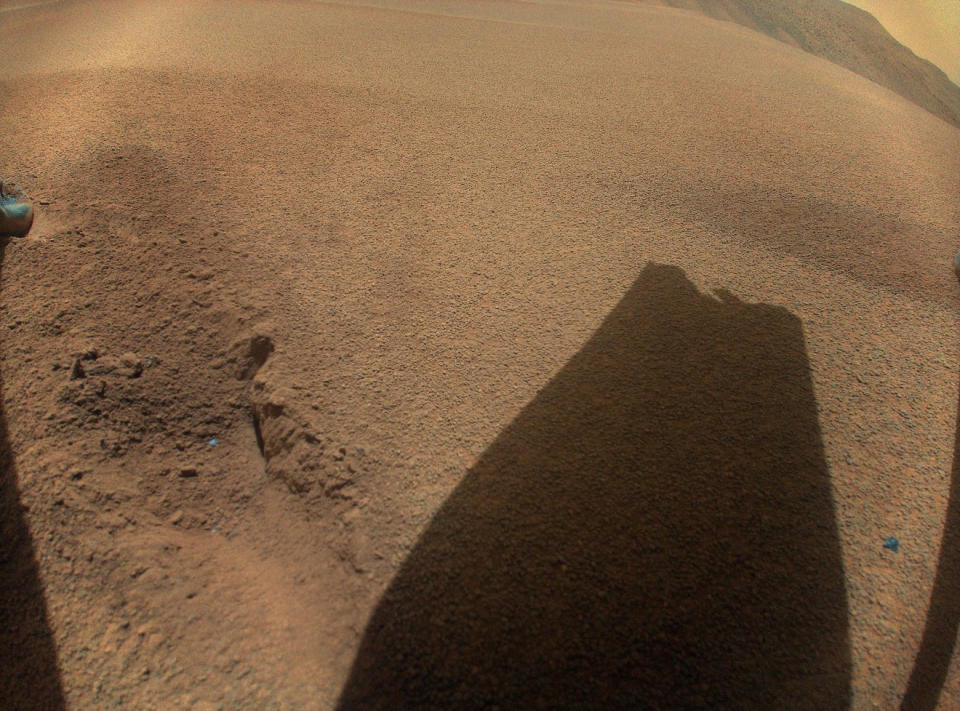Ingenuity Mars helicopter snapped rotor blade during hard landing last month (video, photo)

There's no way Ingenuity could fly through this.
Ingenuity, the 4-pound (1.8 kilograms) helicopter that journeyed to Mars with NASA's Perseverance rover, was grounded for good after suffering a hard landing during a Jan. 18 flight.
New observations by Perseverance show just how rough that touchdown was and make it easy to understand why Ingenuity is now a frozen feature of the Martian landscape.
Related: NASA to 'wiggle' broken Ingenuity Mars helicopter's blades to analyze damage

We already knew that the Jan. 18 landing broke off the tip of at least one of Ingenuity's four rotors; a selfie snapped by the little chopper shortly thereafter made that plain.
That damage by itself was enough to end Ingenuity's flying days on Mars, mission team members said at the time. Helicopters must be perfectly balanced to maintain controlled flight, and losing bits of a rotor robbed Ingenuity of that balance.
But the drone lost more than just a rotor tip. The new Perseverance photos, which the rover took with its SuperCam remote imager on Sunday (Feb. 25), show that at least one of Ingenuity's four rotor blades snapped clean off on Jan. 18.

RELATED STORIES:
— NASA's Mars helicopter Ingenuity takes off on historic 1st powered flight on another world
— Nuclear-powered Dragonfly mission to Saturn moon Titan delayed until 2028, NASA says
Ingenuity and Perseverance landed together on the floor of Mars' Jezero Crater in February 2021. Two months later, the rotorcraft deployed from the rover's belly and began its prime mission, a five-flight campaign designed to show that powered flight is possible on Mars despite the planet's thin atmosphere.
Ingenuity aced that campaign, then shifted to an extended mission during which it served as a scout for the life-hunting, sample-collecting Perseverance. The helicopter racked up a whopping 67 sorties during this phase of its Mars operations, which were led (like those of Perseverance) by NASA's Jet Propulsion Laboratory (JPL) in Southern California.
Its final flight occurred over a sandy patch of terrain that lacked prominent rocks and other features that Ingenuity relied on for navigation, mission team members said. Ingenuity could not stick the landing, and its fast-spinning blades hit the ground.
The helicopter's legacy is assured. Ingenuity was the first vehicle ever to achieve powered flight in the skies of a world beyond Earth, and its success will pave the way for other aerial explorers.
"The NASA JPL team didn't just demonstrate the technology," Tiffany Morgan, deputy director of NASA's Mars Exploration Program, said during a Jan. 31 webcast tribute to Ingenuity. "They demonstrated an approach that if we use in the future will really help us to explore other planets and be as awe-inspiring, as amazing, as Ingenuity has been."

